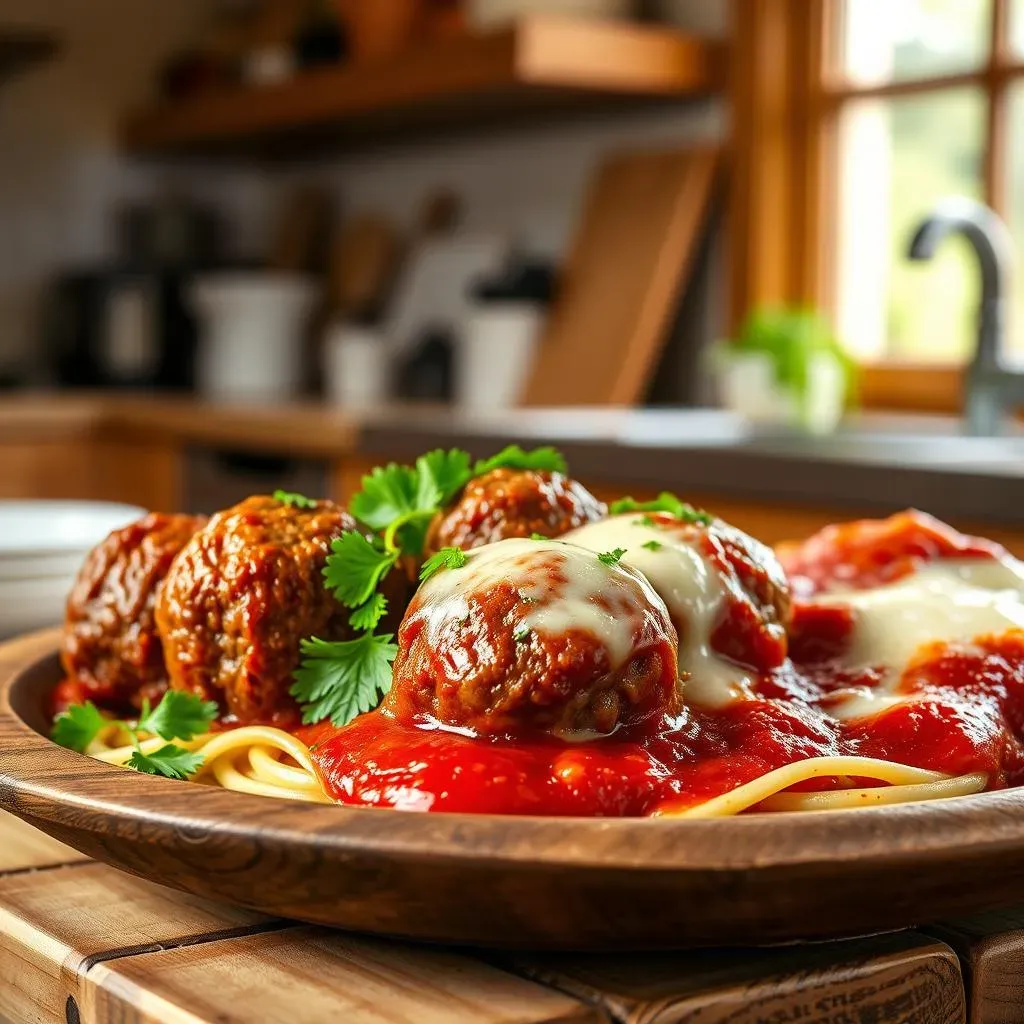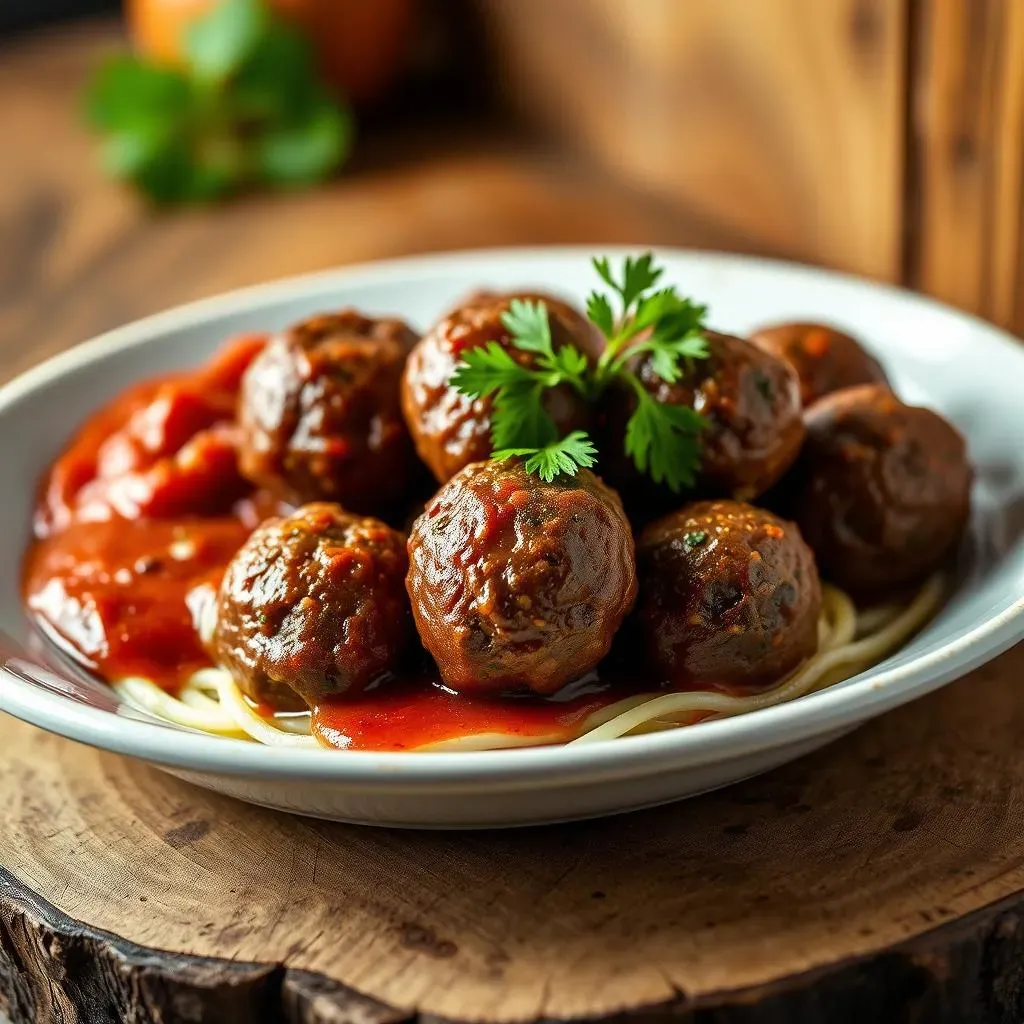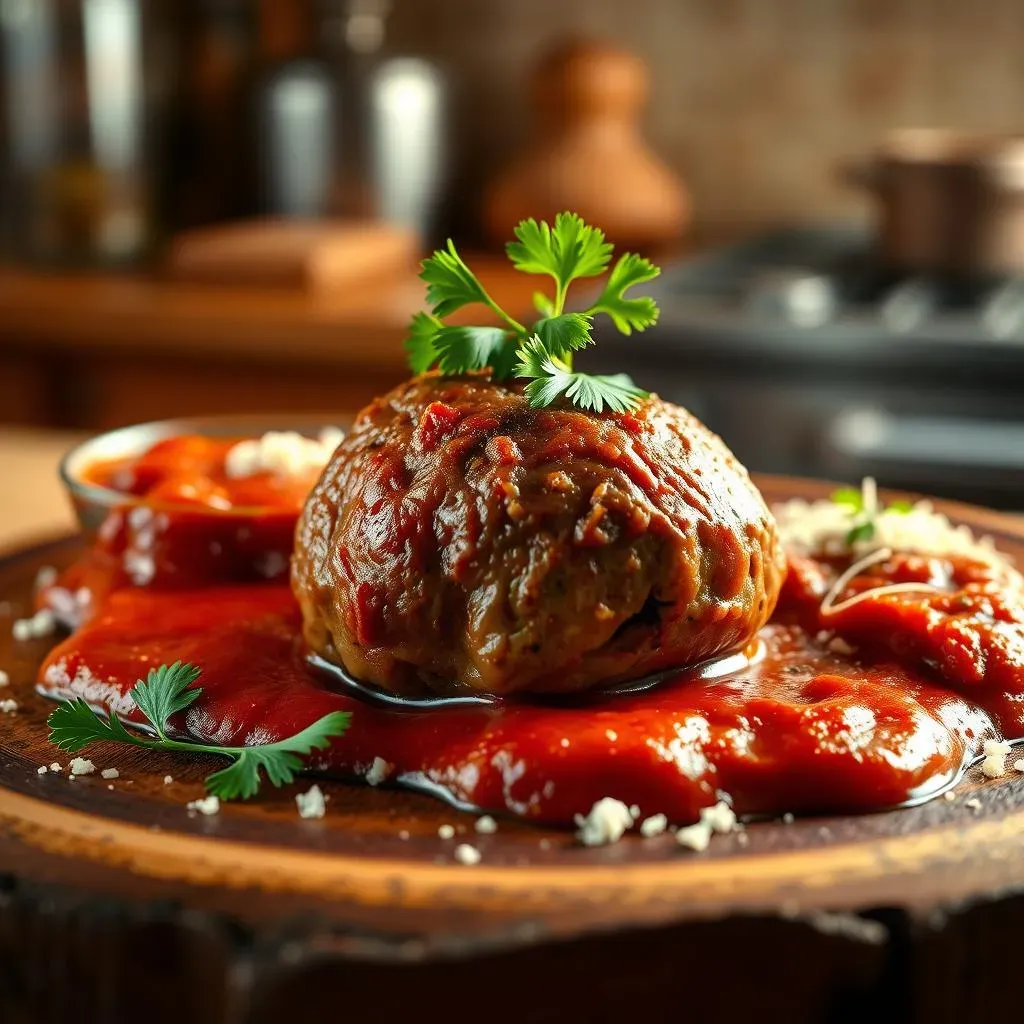Table of Contents
Are you ready to elevate your culinary game? This comprehensive guide dives headfirst into the world of beef meatballs, exploring everything from mastering the perfect meatball recipe to discovering exciting variations and insider tips to guarantee success every time. We'll unravel the secrets to achieving that perfect balance of juicy texture and intense flavor, transforming your ordinary weeknight meal into an unforgettable culinary experience. Forget bland, dry meatballs – we're here to show you how to create mouthwatering "meatball recipe beef" masterpieces that will impress even the pickiest eaters. Get ready to embark on a delicious journey as we explore the art of crafting the ultimate beef meatball, from choosing the right ground beef to perfecting the simmering sauce. Whether you're a seasoned chef or a kitchen novice, this guide provides clear, step-by-step instructions, helpful tips, and creative variations to help you create beef meatballs that are both incredibly tasty and incredibly easy to make. Prepare to be amazed by the simple techniques that will transform your cooking and leave you craving more!
Mastering the Perfect Beef Meatball Recipe

Mastering the Perfect Beef Meatball Recipe
Choosing Your Ground Beef
Let's start with the star of the show: the ground beef! The fat content is key. Leaner ground beef (90% lean) will result in meatballs that are a bit firmer, while fattier ground beef (80/20) yields incredibly juicy and tender meatballs. It's a matter of personal preference, but for ultimate juiciness, I highly recommend an 80/20 blend. Consider the flavor profile you're aiming for as well. A higher fat content adds richness, while leaner options offer a lighter, cleaner taste. For a deeper dive into this crucial decision, check out our guide on for your meatball masterpiece.
Once you've selected your ground beef, the next step is to ensure it's properly chilled. Cold ground beef is easier to handle and less likely to become mushy while you're mixing and shaping the meatballs. This prevents overworking the meat, which can lead to tough meatballs. For tips on prepping your beef, check out our post on for optimal results.
Ground Beef Type | Fat Content | Meatball Texture |
|---|---|---|
90% Lean | 10% Fat | Firmer, Less Juicy |
80/20 | 20% Fat | Juicy, Tender |
The Art of the Meatball Mixture
Now for the magic! The perfect meatball mixture is a delicate balance of flavors and textures. We'll start with a classic combination of breadcrumbs, eggs, and seasonings. The breadcrumbs absorb moisture and help bind the meat, preventing the meatballs from falling apart during cooking. Eggs add richness and bind the ingredients together. Don't be afraid to experiment with your seasonings! Fresh herbs such as parsley and oregano add bright, herbaceous notes, while garlic and onion provide a savory depth. For some inspiration, take a look at our page for some exciting alternatives.
Overmixing the meatball mixture is a common mistake that can lead to tough meatballs. Gently combine the ingredients until just mixed. Using your hands is often the best way to ensure even distribution without overworking the meat. Once your mixture is ready, it’s time to form those perfect spheres. Use a cookie scoop or your hands to create uniformly sized meatballs, ensuring even cooking. For a more in-depth guide on achieving the perfect consistency, see our article.
- Ground Beef (80/20 recommended)
- Breadcrumbs (plain or Italian-seasoned)
- Eggs (large)
- Fresh Herbs (parsley, oregano)
- Garlic (minced)
- Onion (finely chopped)
- Salt and Pepper
Delicious Variations on the Classic Beef Meatball Recipe

Delicious Variations on the Classic Beef Meatball Recipe
Spice it Up: Spicy Beef Meatballs
Let's kick things up a notch! Adding a fiery kick to your meatballs is surprisingly simple. A dash of cayenne pepper, a pinch of red pepper flakes, or a healthy dose of your favorite hot sauce can transform your classic meatballs into a flavor explosion. For a truly authentic experience, explore the rich world of international spices. Think smoky chipotle peppers for a Mexican twist, fiery gochujang for Korean flair, or fragrant harissa paste for a North African adventure. The possibilities are endless!
Remember, you can always adjust the spice level to your liking. Start with a small amount and gradually increase until you reach your desired heat. For those who really love heat, check out our guide on for some extra tips and techniques.
- Cayenne pepper
- Red pepper flakes
- Hot sauce (Sriracha, Frank's RedHot, etc.)
- Chipotle peppers
- Gochujang
- Harissa paste
Global Fusion: International Beef Meatball Inspirations
Why limit yourself to just one culinary tradition? The beauty of meatballs lies in their adaptability. Take a culinary journey around the world by incorporating flavors from different cuisines. Imagine the tangy sweetness of Moroccan lamb meatballs (easily adapted for beef!), the aromatic spices of Indian meatballs, or the savory umami of Japanese meatballs. You can easily modify the seasoning blend to reflect your favorite global cuisine. Remember to adjust cooking methods as needed; some cultures prefer frying, while others favor baking or simmering in a rich sauce.
For even more global inspiration, explore our collection of featuring diverse flavors and cooking methods from around the world.
Cuisine | Key Flavor Profile | Cooking Method Suggestion |
|---|---|---|
Moroccan | Spices (cumin, coriander, ginger), preserved lemon | Slow simmering in a tagine |
Indian | Garam masala, turmeric, chili powder | Baking or pan-frying |
Japanese | Soy sauce, mirin, ginger, sake | Simmering in a dashi broth |
Tips and Tricks for Amazing Beef Meatballs Every Time

Tips and Tricks for Amazing Beef Meatballs Every Time
Don't Overwork the Meat
Gentle handling is key! Overmixing your meatball mixture leads to tough, dense meatballs. Think of it like kneading bread – too much work results in a tough loaf. Gently combine your ingredients until just mixed. Using your hands is often the best way to ensure even distribution without overworking the meat. Once your mixture is ready, it's time to form those perfect spheres. Use a cookie scoop or your hands to create uniformly sized meatballs, ensuring even cooking. Aim for consistent size for even browning and cooking time.
Another important tip is to let the mixture rest for about 15 minutes before shaping the meatballs. This allows the breadcrumbs to absorb moisture and the flavors to meld, creating a more cohesive and flavorful meatball. For a deeper look at this crucial step, read our article on . You’ll be amazed at the difference!
- Avoid overmixing the meat.
- Use your hands for gentle mixing.
- Let the mixture rest for 15 minutes.
Searing for Superior Flavor
Before simmering your meatballs in sauce, consider searing them for a few minutes on all sides. This creates a delicious crust, adding a wonderful depth of flavor and enhancing the overall texture. A quick sear in a hot pan with a little oil will create a beautiful Maillard reaction, adding those incredible browned notes we all crave. This simple step elevates your meatballs to the next level. It's a game-changer!
Searing also helps keep your meatballs nice and firm throughout the simmering process. This prevents them from falling apart in the sauce, ensuring that each bite is a perfect balance of juicy interior and crisp exterior. For more information on this crucial step, check out our guide to which covers searing perfectly.
Step | Description |
|---|---|
1 | Heat oil in a large skillet over medium-high heat. |
2 | Add meatballs and sear for 2-3 minutes per side, until browned. |
3 | Remove meatballs and add to your sauce. |
Simmering to Perfection
Simmering your meatballs in a flavorful sauce is the final step to creating a truly unforgettable dish. This slow cooking process allows the flavors to meld and the meatballs to become incredibly tender. A simmering sauce, rather than a boil, gently cooks the meatballs, ensuring they stay juicy and don't dry out. Depending on your recipe, this can take anywhere from 30 minutes to an hour or more. Patience is key here, as the longer they simmer, the more flavorful they become.
Consider the type of sauce you're using. A rich tomato sauce, a creamy Alfredo, or even a simple broth can all complement your meatballs beautifully. Experiment with different herbs and spices to create unique flavor combinations. To learn more about different sauce options, check out our article on . Don't be afraid to get creative!
- Simmer gently, do not boil.
- Use a flavorful sauce.
- Experiment with herbs and spices.